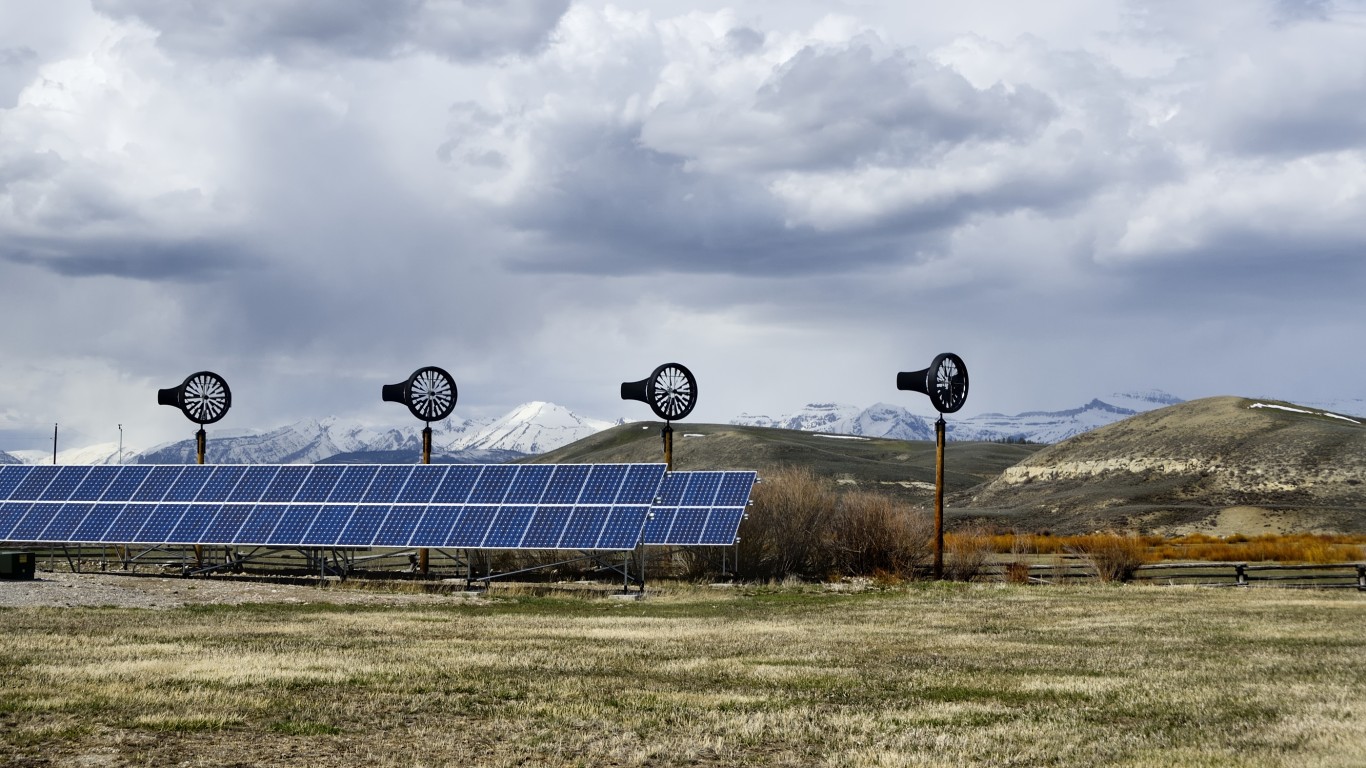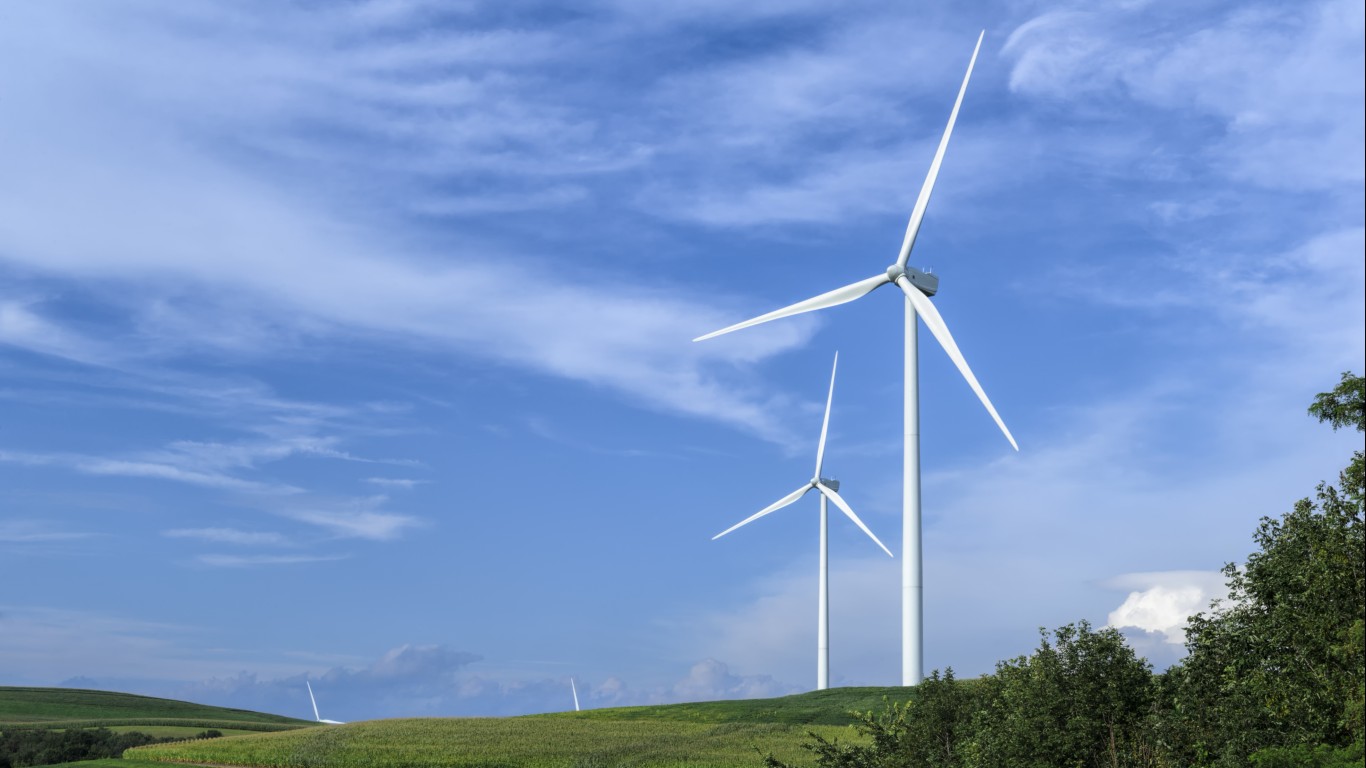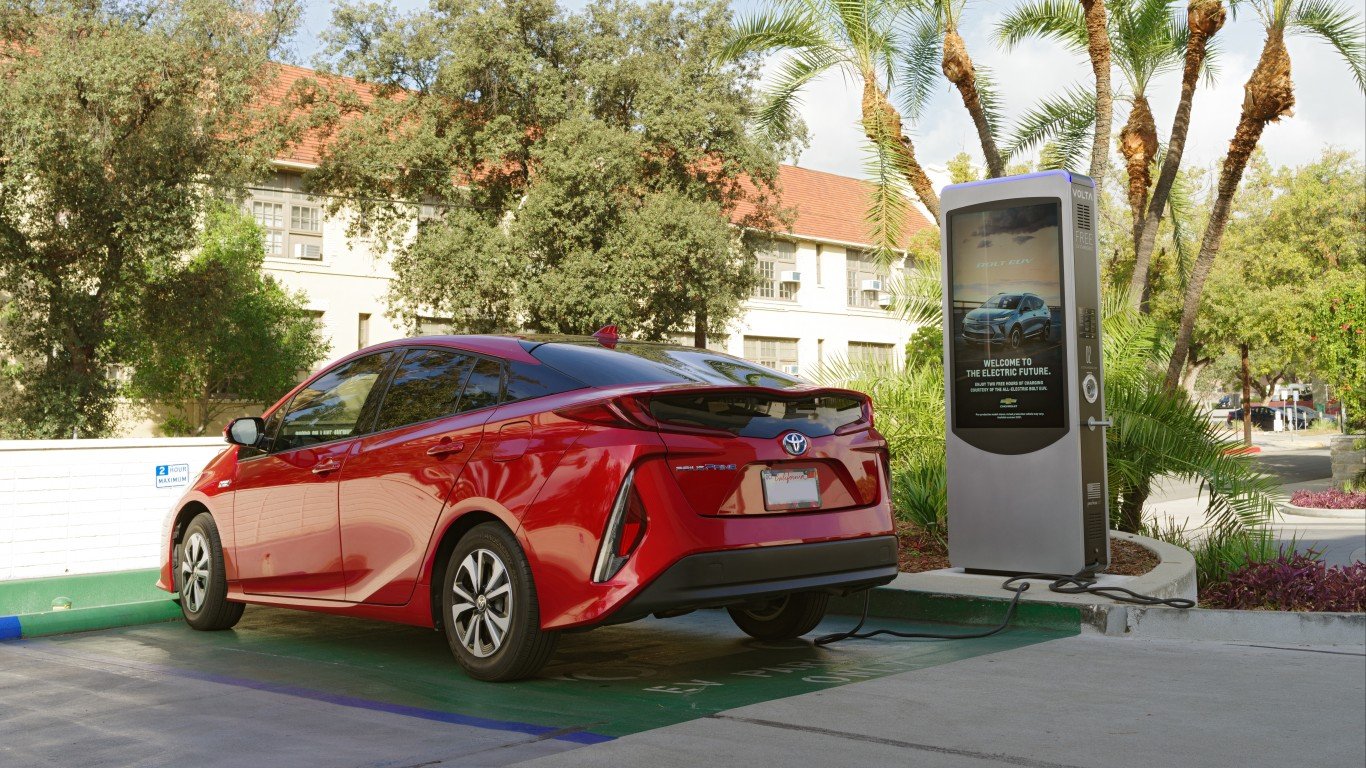
43. Ohio
> Potential jobs created under Inflation Reduction Act in 2030: 1 for every 299 people (39,702 total)
> Potential new jobs as a share of current unemployed population: 17.2%
> Unemployed population in 2022: 230,950 (4.0% of labor force)
> Energy-related carbon dioxide emissions in 2021: 16.5 metric tons per person (11.4% higher than avg.)

42. Wyoming
> Potential jobs created under Inflation Reduction Act in 2030: 1 for every 298 people (1,943 total)
> Potential new jobs as a share of current unemployed population: 18.7%
> Unemployed population in 2022: 10,413 (3.6% of labor force)
> Energy-related carbon dioxide emissions in 2021: 94.3 metric tons per person (537.1% higher than avg.)

41. Pennsylvania
> Potential jobs created under Inflation Reduction Act in 2030: 1 for every 298 people (43,801 total)
> Potential new jobs as a share of current unemployed population: 15.5%
> Unemployed population in 2022: 282,692 (4.4% of labor force)
> Energy-related carbon dioxide emissions in 2021: 16.4 metric tons per person (10.9% higher than avg.)

40. Maine
> Potential jobs created under Inflation Reduction Act in 2030: 1 for every 298 people (4,601 total)
> Potential new jobs as a share of current unemployed population: 23.1%
> Unemployed population in 2022: 19,910 (3.0% of labor force)
> Energy-related carbon dioxide emissions in 2021: 10.5 metric tons per person (29.3% lower than avg.)

39. Louisiana
> Potential jobs created under Inflation Reduction Act in 2030: 1 for every 297 people (15,771 total)
> Potential new jobs as a share of current unemployed population: 20.7%
> Unemployed population in 2022: 76,350 (3.7% of labor force)
> Energy-related carbon dioxide emissions in 2021: 40.8 metric tons per person (175.4% higher than avg.)





